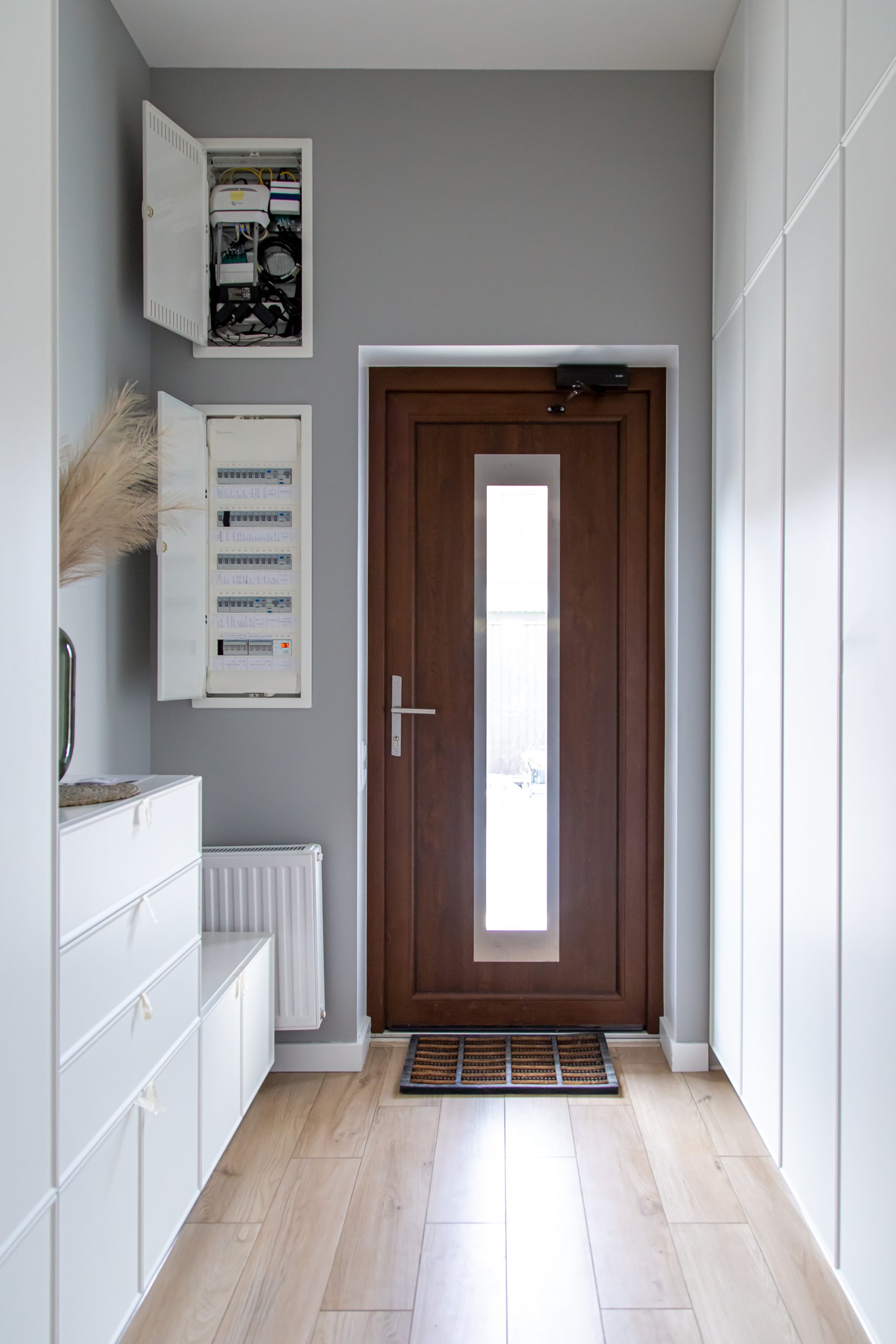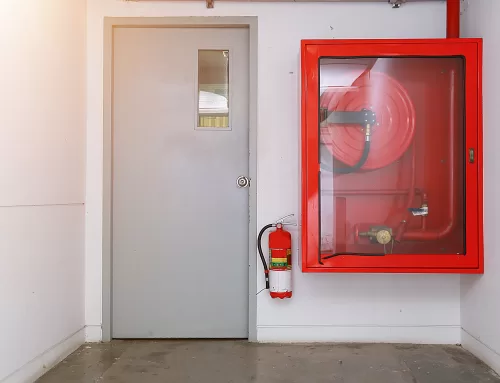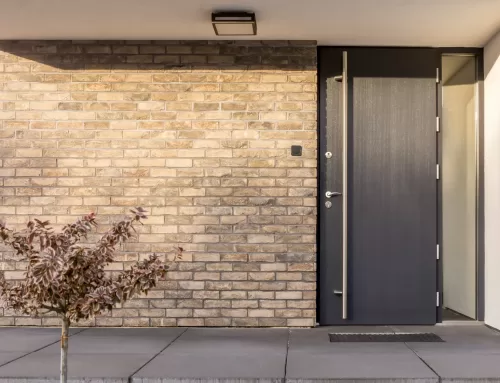Composite doors are a popular choice for homeowners due to their strength, security, and energy efficiency. While known for their durability, they still require regular cleaning and maintenance to keep them looking their best and performing optimally for years to come.
Why Cleaning Your Composite Door Matters?
Regular cleaning is not just about keeping your door looking pristine; it’s crucial for its long-term health and performance. Think of it like servicing your car – you wouldn’t neglect regular maintenance, and the same applies to your door. Dirt, grime, and pollutants can accumulate over time, potentially damaging the door’s surface and affecting its weather resistance. Regular cleaning also helps prevent the build-up of stubborn stains, making future cleaning easier. Furthermore, some manufacturers’ warranties may be contingent on proper maintenance, so keeping your door clean could be essential for preserving your warranty. A clean and well-maintained door also boosts your home’s kerb appeal, creating a positive first impression for visitors and potentially even increasing your property’s value.
Essential Tools and Supplies for Cleaning
Before you begin, gather the necessary cleaning tools and supplies. Having everything at hand will make the cleaning process smoother and more efficient. Here’s a checklist of essential items:
- Soft Cloths or Sponges: Microfibre cloths are ideal as they are gentle yet effective at lifting dirt and grime without scratching the door’s surface. Avoid using abrasive scouring pads or harsh brushes, as these can damage the finish.
- Two Buckets: One bucket for clean water and the other for your cleaning solution. This prevents you from continually dipping a dirty cloth into clean water.
- Mild Soap or Specialised Door Cleaner: A mild dish soap diluted in warm water is often sufficient for general cleaning. Alternatively, you can purchase a specialised composite door cleaner, which is formulated to be gentle yet effective on these types of doors. Always follow the manufacturer’s instructions for diluting and using the cleaner.
- Spray Bottle: A spray bottle helps apply the cleaning solution evenly to the door’s surface.
- Garden Hose (Optional): If you have access to a garden hose, it can be useful for rinsing the door before and after cleaning. However, avoid using a high-pressure washer, as this could damage the door’s seals and finish.
- Squeegee (Optional): A squeegee can help dry the door after cleaning, especially if you’ve used a hose to rinse it. This helps prevent water spots and streaks.
Step-by-Step Guide to Cleaning Your Door
Now that you’ve gathered your supplies, let’s get down to the cleaning process. Follow these simple steps for a sparkling clean door:
- Pre-Rinse (Optional): If your door is particularly dirty, use a garden hose to rinse off loose dirt and debris. This will make the cleaning process easier and prevent you from spreading mud and grime around.
- Prepare the Cleaning Solution: Fill one bucket with warm water and add your chosen cleaning solution according to the manufacturer’s instructions (or a few drops of mild dish soap).
- Wash the Door: Dip a soft cloth or sponge into the cleaning solution and wring out any excess water. Wipe the door down thoroughly, paying attention to all areas, including the frame, edges, and any decorative panels. For stubborn stains, you may need to apply a little more pressure or let the cleaning solution sit for a few minutes before wiping.
- Rinse the Door: If you used a hose for pre-rinsing, use it again to rinse off any remaining cleaning solution. Alternatively, you can use a bucket of clean water and a cloth to rinse the door. Ensure all traces of soap are removed, as these can leave streaks.
- Dry the Door: Use a clean, dry cloth or a squeegee to dry the door thoroughly. This will prevent water spots and streaks from forming. Pay particular attention to the edges and any areas where water might accumulate.
- Clean the Hardware: Don’t forget the door handles, hinges, and letterboxes. Use a separate cloth and some of the cleaning solution to wipe these down. You can also use a metal polish specifically designed for door hardware to keep them shining.
Maintaining Your Door
The frequency of cleaning will depend on various factors, such as your location, the weather conditions, and how exposed your door is to dirt and grime. As a general guideline, cleaning your door every 3-6 months should be sufficient. However, if you live in a particularly dusty or polluted area, or if your door is exposed to harsh weather, you may need to clean it more frequently.
Beyond regular cleaning, there are a few preventative maintenance tips that can help prolong the life of your door:
- Lubricate Hinges: Occasionally, apply a small amount of lubricant to the door hinges to keep them moving smoothly.
- Check Weather Stripping: Inspect the weather stripping around the door regularly for any signs of damage or wear. Damaged weather stripping can allow drafts and water to enter your home, reducing energy efficiency and potentially causing damage.
- Protect from the Elements: If possible, consider installing a porch or awning to protect your door from direct sunlight, rain, and snow. This can help prevent fading and prolong the life of the door’s finish.
Tackling Common Cleaning Challenges
Sometimes, you might encounter stubborn stains that require a little extra attention. Here are some tips for dealing with common cleaning challenges:
- Bird Droppings: Allow the droppings to dry completely, then gently scrape them off with a plastic spatula or credit card. Avoid rubbing the droppings, as this can spread them and potentially scratch the door’s surface. Once the droppings are removed, clean the area with your regular cleaning solution.
- Mud: Let the mud dry completely before brushing it off with a soft brush. Then, clean the area with your regular cleaning solution.
- Grease: Apply a degreasing cleaner to the affected area, following the manufacturer’s instructions. Let it sit for a few minutes before wiping it away with a clean cloth.
- Paint: If you have paint splatters on your door, try using a paint thinner or specialized paint remover. Always test the product on an inconspicuous area first to ensure it doesn’t damage the door’s finish.
- Silicone: For silicone sealant, use a specialized silicone remover available at most hardware stores. Apply it according to the product instructions, often involving softening the silicone before carefully scraping it away.
- Adhesive: For sticky residue, try using white spirit or a specialized adhesive remover. Again, test in an inconspicuous area first.
Choosing the Right Cleaning Products for Your Door
Selecting the right cleaning products is crucial for maintaining the appearance and integrity of your door. Always opt for mild, non-abrasive cleaners. Avoid using harsh chemicals, bleach, or abrasive cleaners, as these can damage the door’s surface and void your warranty. Look for pH-neutral cleaners specifically designed for this type of door or use a diluted mild dish soap solution. Microfibre cloths are your best friend for cleaning without scratching.
Seasonal Cleaning and Maintenance Tips
This care isn’t a one-size-fits-all approach. The changing seasons bring different challenges and require specific attention:
- Spring: Pollen, dust, and general grime accumulate during the spring months. Pay extra attention to cleaning grooves and edges. A hose rinse can be especially helpful after pollen-heavy days.
- Summer: Increased sun exposure can lead to fading over time, even on doors. Consider using a UV protectant spray designed for composite materials to help prevent fading. Clean off any insect residue promptly.
- Autumn: Falling leaves can trap moisture against the door, potentially leading to mould or mildew. Regularly brush away leaves and debris. Check weather stripping for any damage caused by summer heat.
- Winter: Salt and grit from roads can be corrosive. Rinse your door regularly to remove these substances. Check weather stripping for any cracks or damage from freezing temperatures. Lubricate hinges to ensure they operate smoothly in cold weather.
A Sparkling Door, a Beautiful Home
Regular cleaning and maintenance are essential for keeping your door looking its best and performing optimally for years to come.
By following the tips and advice in this guide, you can ensure your door remains a beautiful and functional feature of your home. Remember, a little effort goes a long way in preserving the longevity of your door.




